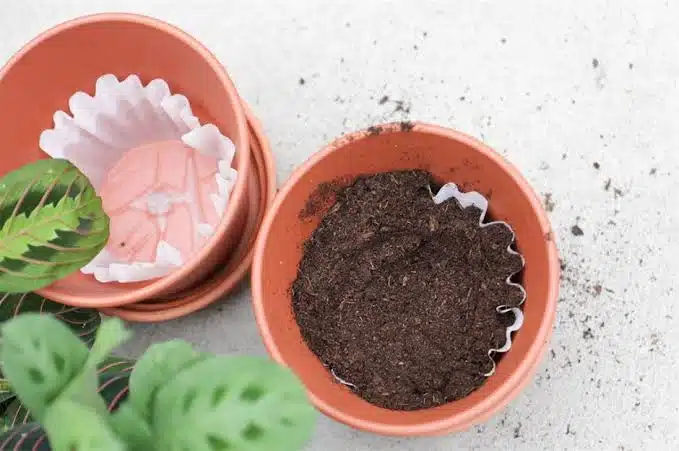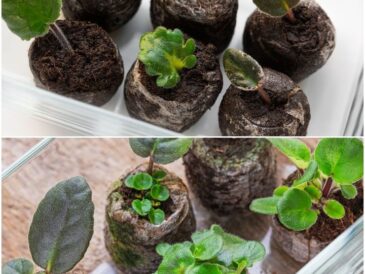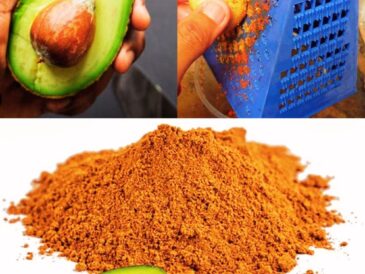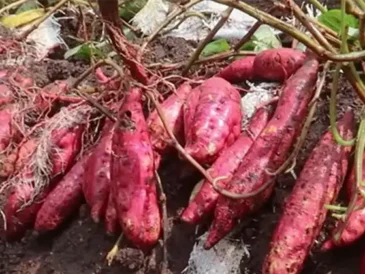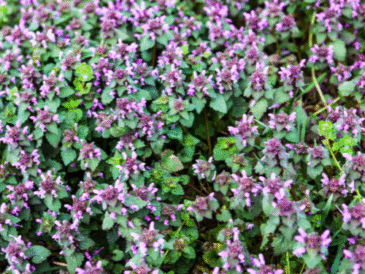Works for Any Type of Plant or Pot
Whether you grow succulents, herbs, flowering annuals, or indoor houseplants, coffee filters work beautifully in all setups.
Great for:
- Houseplants: Keeps potting mix neat and prevents stains under pots.
- Outdoor planters: Helps in windier spots where soil can blow away.
- Seedlings and herbs: Maintains gentle moisture without overwatering.
- Hanging baskets: Reduces dripping soil onto patios or balconies.
You can even use this trick in terracotta pots, where drainage is fast, or plastic containers, which sometimes hold water too long – the filter balances both extremes.
Eco-Friendly and Cost-Effective
One of the best things about this hack is how sustainable it is.
Coffee filters are biodegradable, non-toxic, and inexpensive. You’re repurposing a simple kitchen staple to enhance your garden’s efficiency without waste or chemicals.
And if you already use coffee daily, you can give those filters a second life – even used filters (rinsed clean of grounds) work perfectly in pots.
Bonus tip: Add the used coffee grounds themselves to your compost or mix lightly into your potting soil for a nitrogen boost.
What About Other Alternatives?
You might wonder – can’t I just use rocks, gravel, or mesh instead?
Let’s compare.
| Material | Pros | Cons |
|---|---|---|
| Coffee Filter | Biodegradable, lightweight, keeps soil & water balanced | Breaks down slowly over time (replace when repotting) |
| Gravel or Rocks | Improves drainage slightly | Adds weight, doesn’t stop soil loss |
| Mesh or Screen | Reusable, effective barrier | Harder to cut or fit in round pots |
| Paper Towels or Newspaper | Similar effect, biodegradable | Breaks down faster, may clog holes |
| Fabric or Felt | Works well, reusable | More expensive than filters |
So while other materials can help, coffee filters strike the perfect balance – easy, affordable, and just the right texture for water and air flow.
Can You Use Coffee Filters in Hydroponics or Self-Watering Pots?
Yes – with slight adjustments.
In hydroponic systems, a coffee filter can act as a root support layer, keeping soil or clay pebbles from clogging water reservoirs.
In self-watering planters, the filter helps maintain consistent moisture transfer between soil and the water chamber – preventing oversaturation or mold growth.
It’s one of those small tweaks that improves function without changing design.
How Long Does It Last?
A coffee filter lasts as long as your potting cycle – usually 1–2 years before it naturally decomposes.
When you repot your plant, simply replace it with a fresh filter. The old one can be composted, as it will have partially broken down into organic matter.
This means it’s not just functional – it’s also contributing back to your garden’s ecosystem.
Common Questions About Using Coffee Filters in Pots
1. Will the filter stop drainage completely?
No. Coffee filters are porous – they let water pass easily while holding soil in place.
2. Can I use plastic coffee filters?
Stick with paper filters. Plastic mesh filters don’t biodegrade and can block water movement over time.
3. Does it attract mold or pests?
No – as long as you avoid overwatering. The filter dries with the soil and won’t encourage mold.
4. Can I use used filters with coffee residue?
Yes, but rinse out excess grounds first. Small traces of coffee add nitrogen to the soil, but too much can make it acidic.
5. Does it affect pH or nutrient levels?
Not significantly. Coffee filters are neutral and safe for all soil types and plant varieties.
Gardening doesn’t always require fancy tools or expensive solutions – sometimes, the smartest fixes are already in your kitchen.
